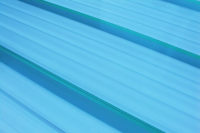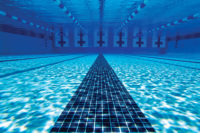
Are you looking for a field in which you are challenged anew every day? Where you can immediately see the results of your creativity? In which you are still frequently surprised even after 36 years in the job? A field where your customers and their constant stream of new requirement profiles energize the market and stimulate the development of new applications? Where increasing market shares and significance point to a rosy future? Then get involved with UV-curing systems, a never-ending success story!
When I joined Bayer AG in 1968 and took on responsibility for conventional and UV-curing unsaturated polyesters, the era of radiation curing had just begun and there was a lot to learn and do.
We had to create stable and, in some cases, highly filled systems that also worked in daylight. We needed to discover the influence of the substrate (e.g. different types of wood) and its color on the curing results. We had to identify suitable radiation sources (initially superactinic fluorescent lamps; later the first high-pressure mercury lamps). We had to reduce the flash-off time to a minimum.
Further steps in the development of polyester technology were:
-
1968 Clear wood polishing finishes using styrenic, unsaturated polyester coatings containing paraffin wax
1969Transparent roller coating fillers for particleboard (these initially caused cracking due to the use of unsuitable fillers)
1970Pigmented systems (pigmented basecoats, pregelled with Co/peroxide, followed by clear UV-curing topcoats)
1972High-build, high-gloss and transparent matte, styrenic, unsaturated gloss polyester (UP) coatings
But progress didn't stop there:
1978 Polyester acrylates establish themselves for furniture applications
1979 Recyclable, water-emulsifiable UP resin. Urethane acrylates, in particular for abrasion-resistant parquet coatings
1983 Monomer-free UP for thin, solventborne coatings with superior resistance properties
1987 Pigmented double-cure systems (conventional followed by UV curing.)
The first amine-modified ether acrylates
1988 Pigmented mono-cure systems with new UV initiators
1996 New low-viscosity urethane acrylates containing no reactive thinners
The major successes achieved using radiation curing in the wood, furniture and parquet industries and in printing inks and overprinting coatings, aroused the interest of the entire coatings industry, stimulating new developments with new requirement profiles, particularly in the area of unsaturated acrylates.
Recent years have seen the development of innovative binders with various properties:
In addition to the development of coatings raw materials, worldwide progress has also been driven by parallel developments by the manufacturers of initiators, UV lamps and equipment. Of course, these market successes have only been possible thanks to collaboration with the coatings manufacturers active in this field. With their assistance, technical expertise and interpersonal skills, incipient problems have been caught early, and radiation curing steadily advanced.
I cannot imagine a more interesting area of the coatings industry in which to work. It is a great pleasure to establish milestones with your own work and watch the successes add up. The last few decades have been full of creativity, excitement, constant learning about new subjects and, above all, successes. I wish you the same in your career and your future. c
Manfred Müller, born in 1946, studied at the University of Applied Sciences in Krefeld, Germany, and graduated in 1967. He joined Bayer AG in 1968, assuming responsibility in Uerdingen for unsaturated polyester coatings, both conventional and UV curing. Since 1992, he has also been a manager at the Radiation Curing Competence Center, Leverkusen, Bayer MaterialScience, responsible for unsaturated acrylic and film coatings.






